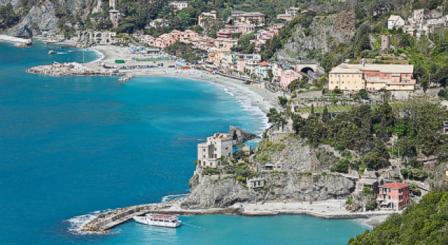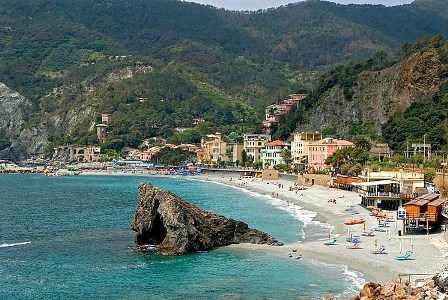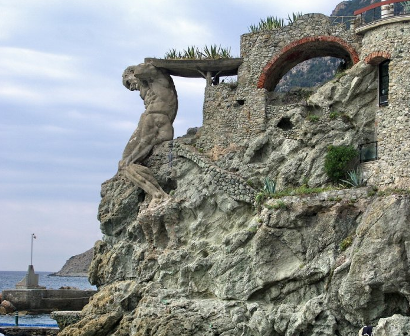5 Terre
"... SIMPLE AND UNIQUE PLACES IN THEIR BEAUTY, allowing visitors to walk the territory to the discovery of scents and colors typical of the Mediterranean, offering the vision of these countries that speak of the labor of men and women who have shaped the terraces and vineyards torn with sweat and pain in the rocks .. now those same rocks cliffs, now twisted on themselves, now as flat sheets of a book that are lost into the sea ... "
The Cinque Terre is a rugged portion of coast of the eastern Ligurian Riviera situated in the territory of the province of La Spezia between Punta and Punta Masco Montenero, in which there are five villages or, as it was in ancient times, lands: Monterosso al Mare, Vernazza, Corniglia, Manarola, Riomaggiore.
RIOMAGGIORE - The village, dating from the early thirteenth century, is known for its historic character and its wine, produced by the town's vineyards. Riomaggiore is in the Riviera di Levante region and has shoreline on theMediterranean's Gulf of Genoa, with a small beach and a wharf framed by tower houses. Riomaggiore's main street is Via Colombo, where numerous restaurants, bars and shops can be found. In Riomaggiore begins the Via dell’Amore. From the path you’ll see the typical vegetation, animals and the wineyard terrace.
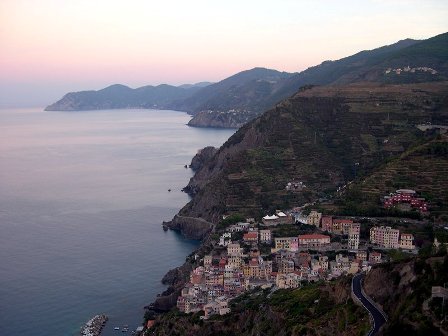
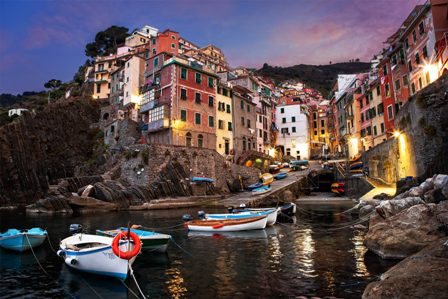

MANAROLA - Manarola may be the oldest of the towns in the Cinque Terre, with the cornerstone of the church, San Lorenzo, dating from 1338. The local dialect is Manarolese, which is marginally different from the dialects in the nearby area. The name "Manarola" is probably dialectical evolution of the Latin,"magna rota". In the Manarolese dialect this was changed to"magna roea" which means "large wheel", in reference to the mill wheel in the town. Manarola's primary industries have traditionally been fishing and wine-making. The local wine, called Sciacchetrà, is especially renowned; references from Roman writings mention the high quality of the wine produced in the region. In recent years, Manarola and its neighboring towns have become popular tourist destinations, particularly in the summer months. Tourist attractions in the region include a famous walking trail between Manarola and Riomaggiore (called Via dell'Amore, "Love's Trail") and hiking trails in the hills and vineyards above the town. Manarola is one of the five villages. Mostly all of the houses are bright and colourful.
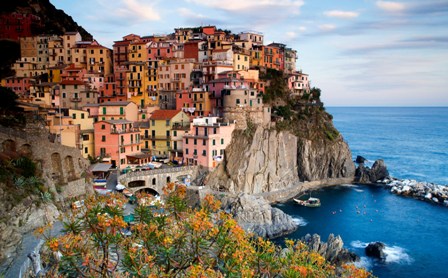
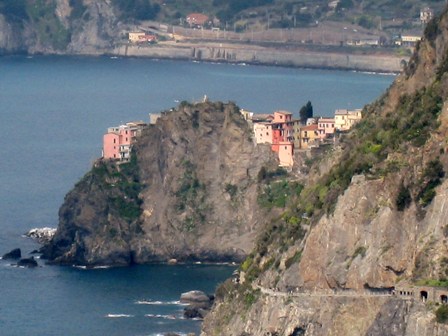
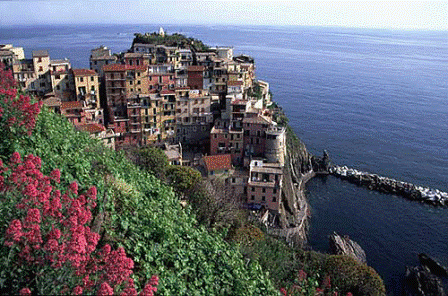
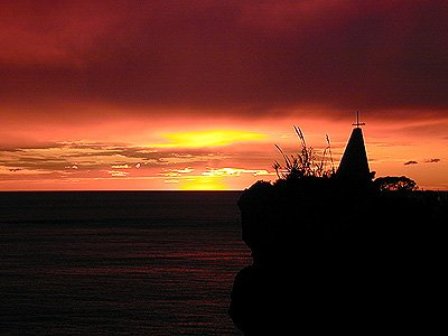
.
CORNIGLIA - Corniglia is not directly adjacent to the sea. Instead, it is on the top of a promontory about 100 metres high, surrounded on three sides by vineyards and terraces and the fourth side descends steeply to the sea. To reach Corniglia, it is necessary to climb the Lardarina, a long brick flight of steps composed of 33 flights with 382 steps or, otherwise follow a vehicular road that, from the station, leads to the village. Sometimes a small bus runs up and down here. The village stretches along the main road, Fieschi Road, and the houses have one side facing this road and the other facing the sea. Corniglia is characterised by narrow roads and a terrace obtained in the rock from which all other four Cinque Terre's villages, two on one side and two on the other, can be seen. The town planning structure presents also original characteristics compared to those of the other villages: the houses are lower set, and only more recently higher, similar to those of the villages of the hinterland
VERNAZZA - First records recognizing Vernazza as a fortified town date back to the year 1080. Referred to as an active maritime base of the Obertenghi, a family of Italian nobility, it was a likely point of departure for naval forces in defence of pirates. Over the next two centuries Vernazza was vital in Genova's conquest of Liguria, providing port, fleet and soldiers. In 1209, the approximately 90 most powerful families of Vernazza pledged their allegiance to the republic of Genova. In 1997, the Cinque Terre was recognized as a World Heritage Site by UNESCO and in 1999 the National Park of the Cinque Terre was born. Today the main source of revenue for Vernazza is tourism. However, as a testimony to the strength of centuries-old tradition, fishing, wine and olive oil production still continue to take place. On 25 October 2011, Vernazza was struck by torrential rains, massive flooding and mudslides that left the town buried in over 4 metres of mud and debris, causing over 100 million euro worth of damage.
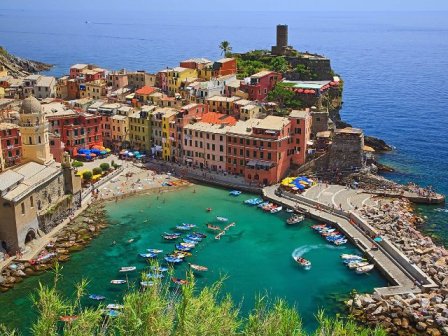
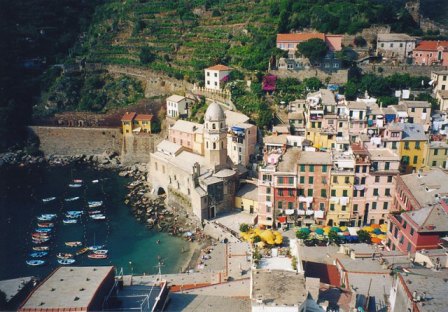
MONTEROSSO - The town is divided into two distinct parts: the old town and the new town. The two areas are divided by a single tunnel that caters to pedestrians and the very few cars in the town. The beach at Monterosso runs along most of the coast line and is well used by tourists and locals. The beach is the only extensive sand beach in the Cinque Terre. Monterosso is a small town that in the summer months is overrun by tourists. The village was briefly excluded from the Cinque Terre trail in 1948, but was re-introduced in mid-1949. This is because Italian officials considered the village too large to be considered part of the historic trail. Monterosso was devastated by heavy flooding and mudslides on October 25, 2011
